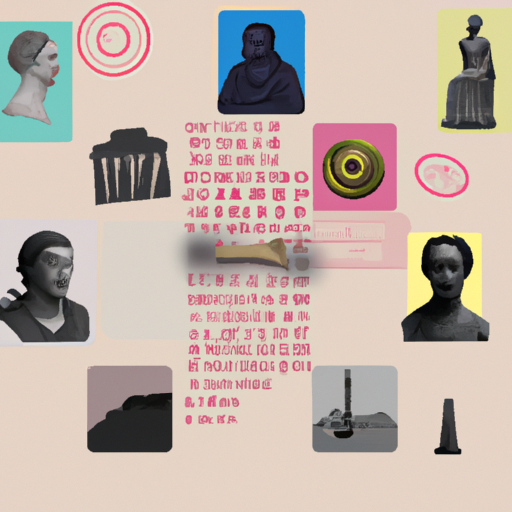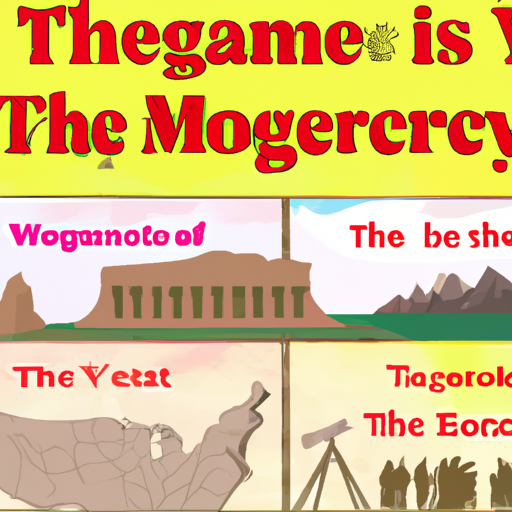A Look at the History of Chinese Cuisine: Ancient Eating Habits in China
Unearth the past of Chinese cooking and find out what the Ancient Chinese consumed! Delve into a world of flavors, spices, and textures that have been around for centuries. Uncover the secrets to creating traditional dishes that are still prepared today. Learn about the various ingredients used in Chinese cuisine and how they were prepared. Discover why some dishes have become staples in many Chinese households. Get familiar with regional specialties and explore the cultural influences behind them. Unravel the mysteries of how ancient recipes have been adapted over time to meet modern tastes. Experience a culinary journey through time and taste history!

Delve into a realm of culinary delights and uncover the secrets of Chinese cooking that have been around for centuries. Unearth the flavors, spices, and textures used to create traditional dishes still prepared today. Discover how regional specialties are shaped by cultural influences from long ago. Trace the evolution of ancient recipes as they’ve been adapted to modern tastes. Find out what Ancient Chinese feasted on and experience a journey through time with every bite!
.
Introduction

A culinary legacy of thousands of years, Chinese cuisine is among the most diverse and intriguing in the world. Resourceful ancient peoples crafted diets from a combination of plant-based ingredients, such as grains, vegetables, fruits, nuts and seeds. Meat was eaten occasionally at festivals or special occasions. Stir-fries, soups, dumplings, noodles and rice were common dishes. Ancient Chinese people also consumed wheat, barley, millet and rice alongside wild plants like lotus root and water chestnuts. For an extra special treat they indulged in bear paw soup or monkey brain stew!
– Historical Dietary Habits of Ancient Chinese
The ancient Chinese diet was a complex amalgam of flavors, ingredients, and customs. From the earliest times, their cuisine has been renowned for its diversity and creativity, drawing from various regions and cultures. Food was not only used to satisfy hunger but also to reflect social status, religious beliefs, and aesthetic values. Generally speaking, grains like millet, wheat, and barley constituted the staples of the diet; vegetables such as cabbage and turnips; fruits like dates and pears; legumes like soybeans; meats such as pork and chicken; fish; eggs; dairy products like milk and cheese; nuts; mushrooms; tea; spices – all were part of it. Rice became more widely consumed in the late Neolithic period (around 5500 BCE).
Religion had an influential role in determining what people ate. Buddhists abstained from eating meat or animal products due to their belief that it caused suffering to animals while Taoists believed certain foods could help them reach spiritual enlightenment. They thus ate special dishes which they thought would benefit both their health and spirituality. Social standing too played a significant role in food choices: those with wealth had access to more luxurious dishes than poorer classes due to their ability to purchase high-grade ingredients from far-off traders or merchants who brought goods from other parts of China or even foreign countries.
In conclusion, dietary habits in Ancient China demonstrate its complexity throughout different time periods in its history — from religious beliefs to social status — making it one of the most fascinating cuisines today!
– Traditional Chinese Cuisine Through the Ages
For millennia, Chinese food has been a pillar of gastronomy, its evolution and adaptation to changing tastes and trends spanning from the earliest days of rice farming in the Yangtze River Valley to the present. In antiquity, cooking was mainly done over an open fire or in clay pots, with ingredients limited to those locally grown or hunted. Then came the Han Dynasty (206 BCE-220 CE), bringing spices from Central Asia like pepper, ginger and cinnamon as well as greater emphasis on presentation. During the Tang Dynasty (618-907 CE), vegetarianism became popular amongst upper classes seeking a more spiritual lifestyle, leading to increased use of tofu and other plant proteins alongside garlic and scallions. The Song Dynasty (960-1279 CE) is often regarded as a golden age for Chinese cuisine; emperors sent their chefs out in search of new ingredients while also developing recipes using local produce in creative ways. The Ming Dynasty (1368-1644) saw further refinements with stir frying, steaming and deep frying becoming popular methods of preparation.
Today, classic dishes like Peking duck, sweet and sour pork, dumplings, dim sum and noodles remain integral parts of traditional Chinese cuisine – enjoyed by generations throughout history – while continuing to evolve.
– History of Food Production in Ancient China
Throughout the ages, Chinese farmers have been at the forefront of food production, from the early use of primitive tools to harvest wild grains to the complex systems of irrigated agriculture that sustained an ever-expanding population. In Neolithic times, Chinese cultivators began to domesticate plants and animals, and developed new techniques such as irrigation and terracing to maximize yield. They also cultivated a variety of crops including rice, wheat, millet, beans, and vegetables. With advances in technology came better storage methods such as drying and salting which allowed for year-round availability of certain foods. During the Han Dynasty (206 BCE – 220 CE), food production had become a major industry with large estates devoted to growing various crops. This period saw further progress with animal-powered plows and fertilizers made from human waste being introduced. The Tang Dynasty (618–907 CE) ushered in even more advancements in food production with improved irrigation systems and crop rotation techniques used to further increase yields. By the end of this era, China was able to produce enough food for its burgeoning population without having to rely on imports from other countries; ancient China thus remained one of the most advanced civilizations in terms of food production during this time period.
– Impact of Imperialism on Ancient Chinese Eating Habits
The effects of Imperialism on Chinese cuisine are undeniable. With the advent of foreign trade and cultural exchanges during the Qing Dynasty, which spanned 1644 to 1912, there was a drastic shift in what people ate and how it was prepared. New ingredients, such as beef, pork, potatoes, tomatoes, corn, rice wine, soy sauce and tea were added to traditional dishes while baking and roasting techniques from Europe were adopted by Chinese chefs. This allowed for the creation of more complex dishes that blended multiple flavors and textures.
Moreover, processed foods like canned goods and sugar-sweetened beverages became increasingly popular due to their convenience. Fast food restaurants have also become a regular sight in recent years as globalization has spread and wealth has increased among the Chinese population.
All in all, Imperialism has had a remarkable effect on China’s culinary culture. What was once considered exotic is now commonplace in many households across the country.
– Exploring the Rituals and Customs Surrounding Eating in Ancient China
Feasting has been a cornerstone of Chinese heritage and chronicles for ages. For centuries, people from the past have developed numerous rituals and customs that are still observed today when it comes to consuming food. Everything from the way food is cooked to how it is served was closely examined and subject to strict regulations.
Confucianism had a major influence on the way meals were eaten in Ancient China, dictating that they should be savored with respect and admiration. This meant that all participants at the table had to display proper manners such as using chopsticks correctly, refraining from talking while eating, and abstaining from impolite behavior. Moreover, there were rigid rules regarding what kind of dishes each member of society was allowed to eat.
Apart from etiquette rules, Ancient Chinese also had special ceremonies related to meals. It was traditional for everyone at the table to bow before starting their meal and give thanks for the food they were about to receive. During the course of their meal, diners would often share stories or recite poems as entertainment. After dinner was over, guests usually gave presents or tokens of appreciation in return for their host’s hospitality.
These rituals and customs concerning eating in Ancient China still remain an integral part of Chinese culture even now. By understanding these traditions and incorporating them into our lives we can gain insight into how our ancestors lived and appreciated good food.
conclusion

A perplexing and bursting journey through time, Chinese cuisine has been around since the Neolithic period. Grains, fruits, vegetables, and a myriad of meats such as pork, beef, chicken, and fish were staples in the ancient Chinese diet. Spices and herbs were also frequently used to enhance flavors. A variety of condiments including soy sauce, vinegar, honey, and pastes were available for use as well.
.
Some questions with answers
Q1. What was the staple food of Ancient Chinese?
A1. Rice was the staple food of Ancient Chinese.
Q2. What other foods did Ancient Chinese eat?
A2. In addition to rice, Ancient Chinese also ate wheat, millet, vegetables, fruits, meat and fish.
Q3. Did Ancient Chinese have access to dairy products?
A3. No, dairy products were not available in Ancient China as cows and goats were not native to the region.
Q4. Did Ancient Chinese use spices when cooking?
A4. Yes, Ancient Chinese used a variety of spices such as ginger, garlic, star anise and Sichuan pepper for flavoring their dishes.
Q5. Is there any evidence that Ancient Chinese had access to sugar?
A5. Yes, archaeological evidence suggests that ancient people in China had access to sugar from around 2000 BC onwards.





